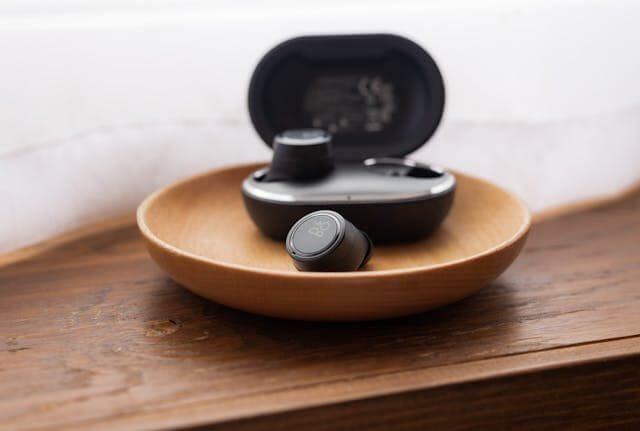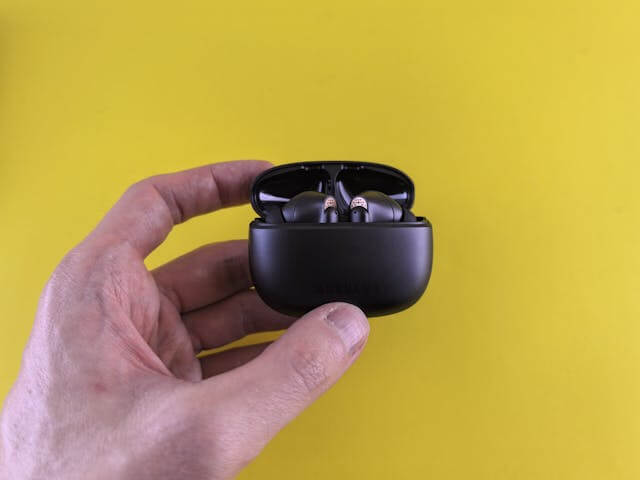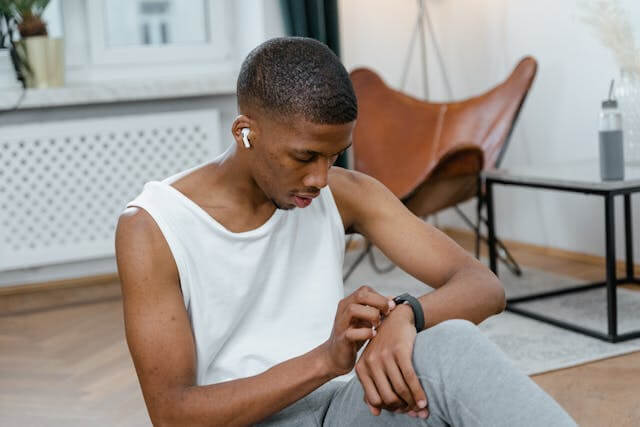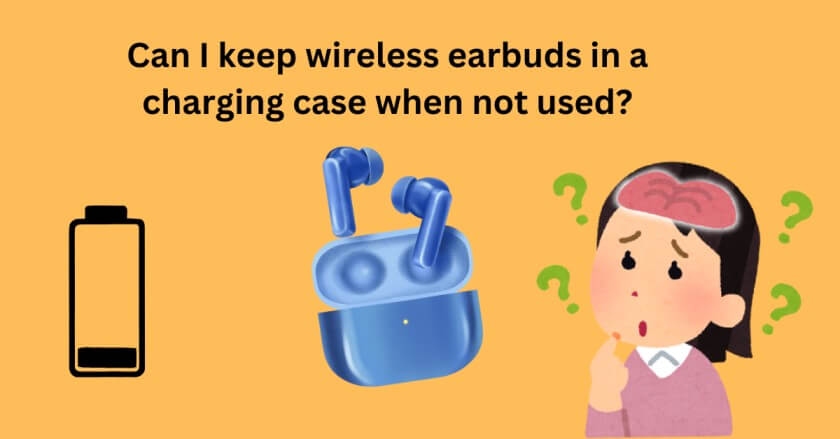
Can I keep wireless earbuds in a charging case when not used? Bluetooth headphones and Bluetooth earbuds are not at all the same. They are made to come with cases that stay in them even when fully charged. These cases not only keep your earbuds safe, but they also charge them.
But what if your tws earbuds are already fully charged? Will you still put your earbuds away in the case when you’re not using them? Many tws wireless earbuds have lithium-ion batteries, which are made to stop charging when they are full. The battery will naturally die over time, which is fine.
However, if you charge your tws true wireless earbuds every time it gets below 20% charged, the battery will last a lot longer. The battery life of your wireless earbuds should keep them in their case when not in use. The case will protect your earbuds from dust, high temperatures, and moisture.
Let’s look at other facts about your wireless earbuds that you might not have known and how leaving them in the case can make them last longer.
Can you overcharge earbuds?

Never worry about overcharging your wireless earbuds. It won’t hurt them. Earlier, most device batteries were nickel-based, and charging them too much made them last less long.
However, overcharging lithium-ion batteries doesn’t hurt them anymore since they are so common.
When not in use, can wireless earbuds be stored in their case?
Only for safety’s sake. To keep your wireless earbuds safe, don’t take them out. First, lithium-ion batteries can’t be charged too much, as we already said.
Some wireless earbuds have a drip mode that slows charging from 80% to 100% so the battery doesn’t get stressed. [Can I keep wireless earbuds in a charging case when not used?]
Most of them will stop charging when they reach 100% charge. There’s no need to worry about charging your earbuds too much because they stop when the battery is full.
Turning off your earbuds will preserve battery life.
It remains the same when the app is closed or the power is turned off. So, putting your Bluetooth earbuds away wouldn’t save any extra power. You can just charge them instead of doing all that extra work.
Why lithium-ion batteries can’t be overcharged?
You can’t use lithium-ion batteries too much, but they can only be charged a certain number of times before they start to break down and need to be replaced. Most of the time, it can hold 300 to 500 charges.
You lose one charge cycle when the battery level in your earbuds drops below 20%. This means that the battery will die faster if you let it drop below 20%.
Over time, the battery will die on its own, which is normal. Your wireless earbuds’ battery life will be much longer if you charge them every time they drop below 20% charged. If you don’t use your wireless earbuds, put them in their case. This will keep their battery healthy.
Can you charge wireless earbuds without the case?
No, most wireless earbuds on the market need to be charged with the case. The case can be charged wirelessly, but not the earbuds.
Is it bad to keep the charging case charging overnight?
Not at all. The charging case, like your earbuds, uses lithium-ion batteries that stop charging when they’re fully charged. In this manner, you may avoid worrying about your charging case or earphones getting too charged.
How to know when wireless earbuds are fully charged?
The case will flash red when you plug in and charge your earbuds. Once it’s fully charged, the light will stay red instead of flashing. It can take anywhere from two to three hours, depending on the size of the battery, to fully charge it. This time, you could ask the people who made your tws earbuds. [Can I keep wireless earbuds in a charging case when not used?]
Does charging the battery to 100% hurt it?
The charger stops sending power when the battery reaches 100%, so this is not a problem. But, as we already said, keeping the battery charged makes it work harder, which hurts its life. So, the earbuds should be taken off the charger as soon as they are fully charged.
What can damage your wireless earbuds’ battery?
To begin, every cell loses power over time. There are, however, some things that can make this process go faster. These are:
Being in places that are very hot or very cold
Being near water
Not being far from chemicals.
What’s the average battery life?
You should know that batteries lose their power over time. Batteries don’t need to last longer because people still throw them away after one use. Yes, the tech is out there, but it’s not ready to be used in business yet.
Of course, things aren’t that bad. The cells in most of them last for two to four years. Models that are too cheap or too expensive are not what I mean. These are types that most people would be fine with. Users are happy with two years, which is why I said they could choose.
“What can I do?” is what you need to ask yourself. Take care of it like any other tool you use to make sure it lasts as long as possible. You should always take care of your ears, even if you don’t notice a difference.
How to extend your lifespan?
No matter how good your wireless earbuds are, these tips will help them last longer.
Do not forget to bring the charging case with you so that you can charge it right away if you need to. You won’t lose your earbuds either because this holds them together while you store them. [Can I keep wireless earbuds in a charging case when not used?]
Your earbuds might not last as long if you keep them in your pocket. Keep them safe in the box.
Dust and other things can damage the ears, so clean them.
How to increase battery life?
To make electric items, especially earbuds, last longer, you need to follow some rules. To care for them, the same steps are used. Before you use it for the first time, make sure it’s fully charged. Also, don’t try to put it somewhere too hot that makes you feel bad.
Could you please unplug your adapter when it’s fully charged? Finally, try to turn it off when you’re not using it. I think you should keep your lithium-ion batteries plugged in and charged up to about 30% to 40% for the best performance. You can find out more by reading the paper that came with your tws earbuds.
Sharing My Experience

I still remember getting my first pair of TWS earbuds. I was so happy I used them all the time and sometimes forgot to charge them properly. One day I forgot to charge them and when I put them back in the case, they still wouldn’t turn on.
I was scared! Reading about it taught me that lithium-ion batteries don’t work well when they’re left to die for a long time. After that, I always put my earbuds back in their case when I wasn’t using them, even when they were fully charged.
By accident, it kept them safe from dust and damage and kept their battery in better shape. Slowly, I saw that they held their charge longer, and I didn’t have to worry about losing them in my pocket or bag. I always keep them in their case now, and even after a year of use, they still work great!
Conclusion: Can I keep wireless earbuds in a charging case when not used
You can now leave your wireless earbuds in their case without worrying. It’s even better for the earbuds’ batteries. The wireless earbuds are easy to lose, so the case is the best way to keep them safe. Everyone knows that charging something too much is bad, but wireless earbuds stop charging when they are full, even if they are not in a case. Your earbuds can be stored in the case when not in use.
Do earbuds drain battery when not in case?
But AirPods are meant to be always ready to use, so if you don’t put them back in their case, the battery will die. The AirPods go into a low-power mode when they’re not being used. This is what weakens the battery.
How to store earbuds long term?
The wire should be coiled “over-over” or “over-under” instead of being rolled around or gathered up. Put your headphones and cord in their bag or case once the wire is nice and tight.
Is it bad to wear earbuds all day?
If someone wears headphones for a long time every day, they are more likely to build up wax. Also, they can hurt the skin and tissue on the outside of their ear canal. How much wax builds up also depends on how big your ear tubes are and how active the oil glands are in them.

